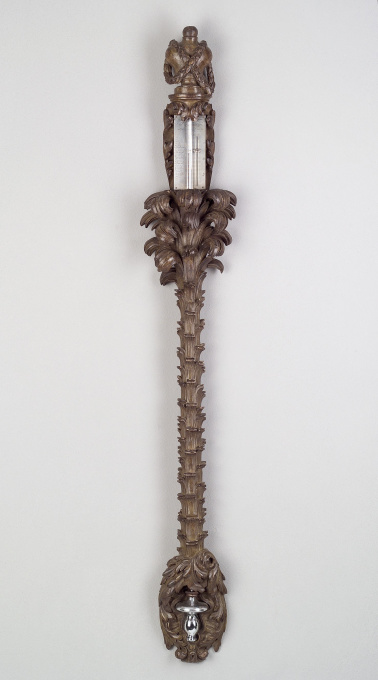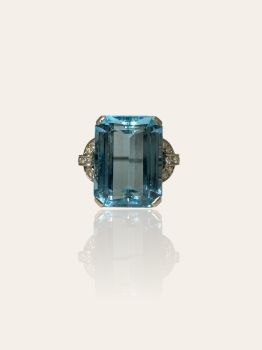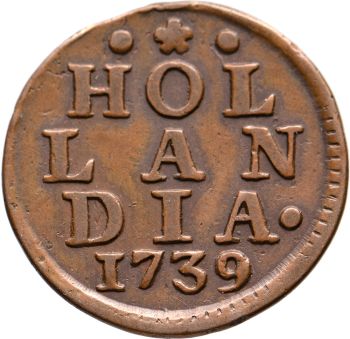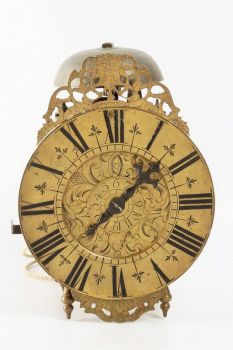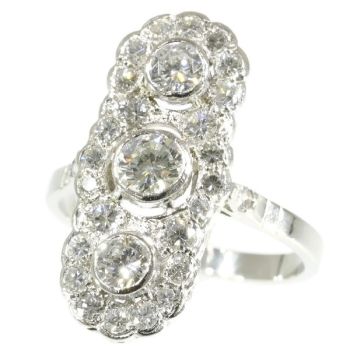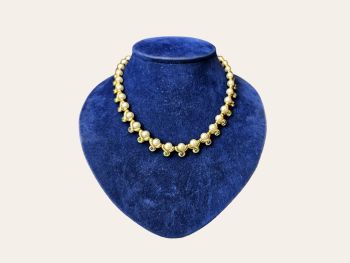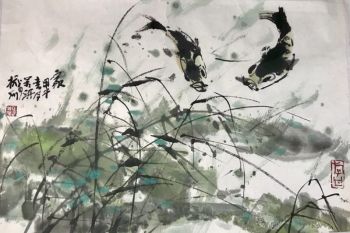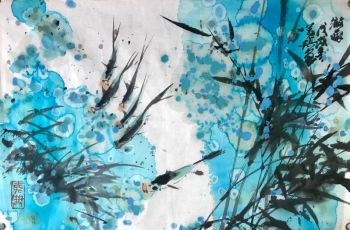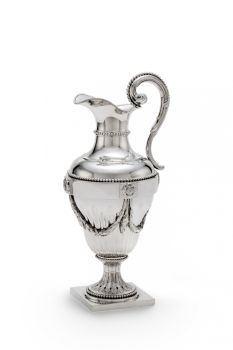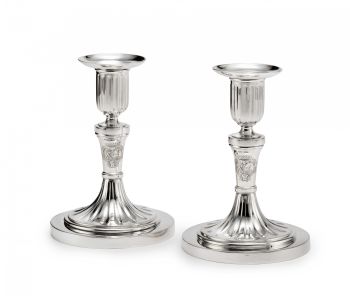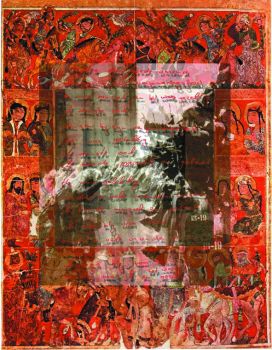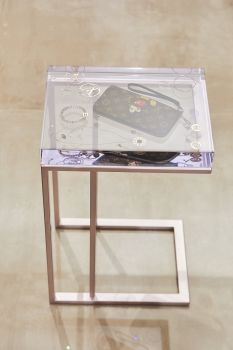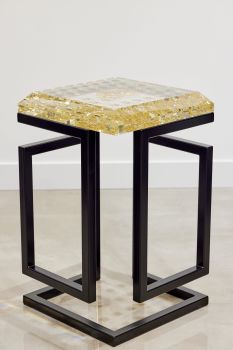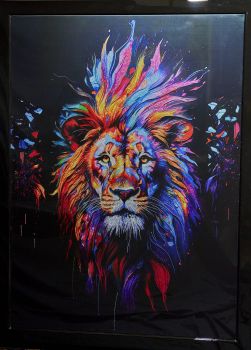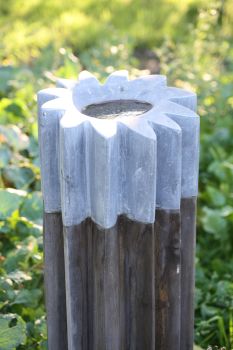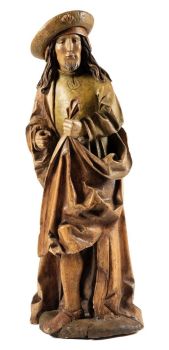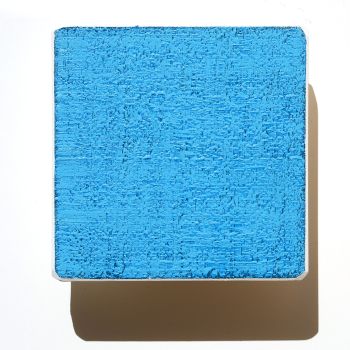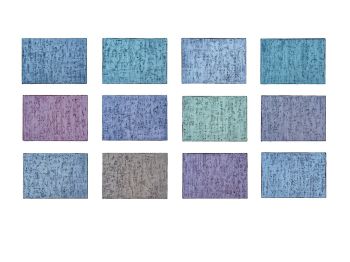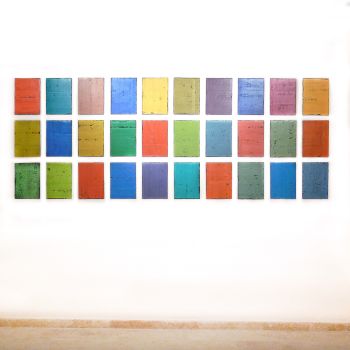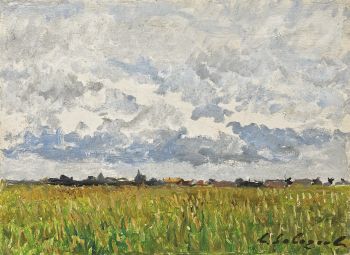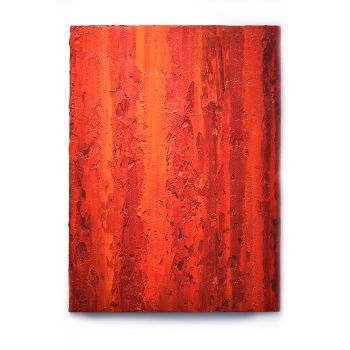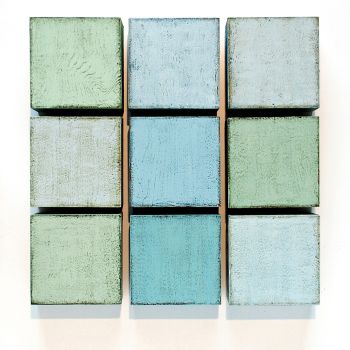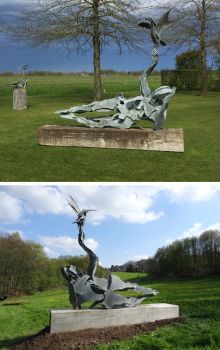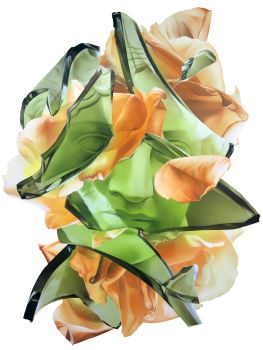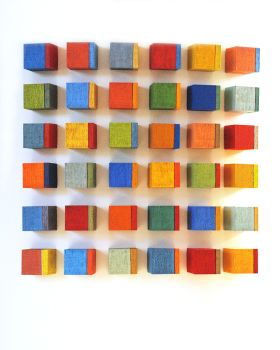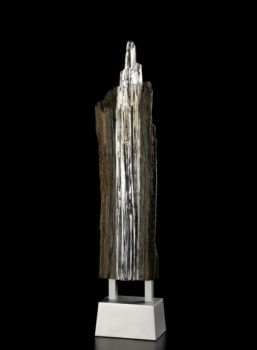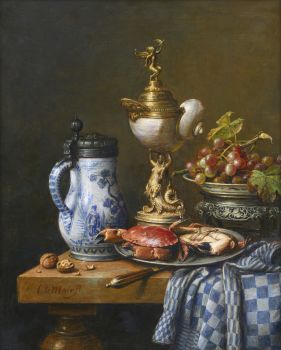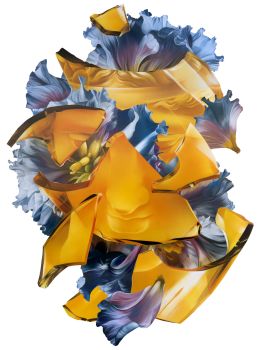French Louis XVI Mercury Barometer in the Shape of a Palmtree 1765
Artista Desconocido
MaderaNuez
108 ⨯ 16 cm
Actualmente no disponible a través de Gallerease
- Sobre la obra de arteThe lower part of this barometer, that holds the mercury receptacle, is decorated with asymmetrical ornamental leafs. Above it the trunk of the palmtree with its trimmed leafs and topped with a circle of entire palmleafs.
On top of the tree the scale that is topped by a vase that is decorated with crossing garlands of laurel.
In this uniquely styled barometer we can see the expression of the extensive interest in ‘Chinoiserie’, although the palmtree is not typically Chinese but rather more an exotic and eastern motive. The palmtree shape is very suitable for columniform objects. The top with the corona of large leafs serves as a capital.
‘Chinoiserie’ was not an attempt to immitate Chinese art or Chinese objects, but a typical European style that was inspired by the rather romantic and poetic view of the East. Eastern motives like here the palmtree, were combined with other areas of interest of that period. In this case; a neoclassical urn and ornamental laurel leafs. - Sobre el artista
Puede suceder que un artista o creador sea desconocido.
Algunas obras no deben determinarse por quién está hecho o por (un grupo de) artesanos. Algunos ejemplos son estatuas de la Antigüedad, muebles, espejos o firmas que no son claras o legibles, pero también algunas obras no están firmadas en absoluto.
También puedes encontrar la siguiente descripción:
•"Atribuido a …." En su opinión, probablemente una obra del artista, al menos en parte.
•“Estudio de….” o “Taller de” En su opinión, una obra ejecutada en el estudio o taller del artista, posiblemente bajo su supervisión
•“Círculo de…” En su opinión, una obra del período del artista que muestra su influencia, estrechamente asociado con el artista pero no necesariamente su alumno.
•"Estilo de …." o “Seguidor de…”. En su opinión, una obra ejecutada al estilo del artista pero no necesariamente por un alumno; puede ser contemporáneo o casi contemporáneo
•"Manera de …." En su opinión una obra al estilo del artista pero de fecha posterior
•"Después …." En su opinión, una copia (de cualquier fecha) de una obra del artista
•“Firmado…”, “Fechado…” o “Inscrito” En su opinión, la obra ha sido firmada/fechada/inscrita por el artista. La adición de un signo de interrogación indica un elemento de duda.
•“Con firma…”, “Con fecha…”, “Con inscripción…” o “Lleva firma/fecha/inscripción” en su opinión la firma/fecha/inscripción ha sido añadida por alguien que no es el artista
Artwork details
Related artworks
- 1 - 4 / 12
Johannes Schiotling
Un par holandés de candelabros de plata1784
Precio a consultarJacob J. Roosjen SRI
1 - 4 / 13Artista Desconocido
A rare Japanese export lacquer medical instrument box1650 - 1700
Precio a consultarZebregs & Röell - Fine Art - Antiques
Artista Desconocido
UN NETSUKE DE MARFIL DE UN HOLANDÉS CON UNA COCKEREL18th century
Precio a consultarZebregs & Röell - Fine Art - Antiques
1 - 4 / 24Rene Rietmeyer
''Installation Miami-Beach 2006''2006
Precio a consultarEuropean Cultural Centre Collection
1 - 4 / 24

